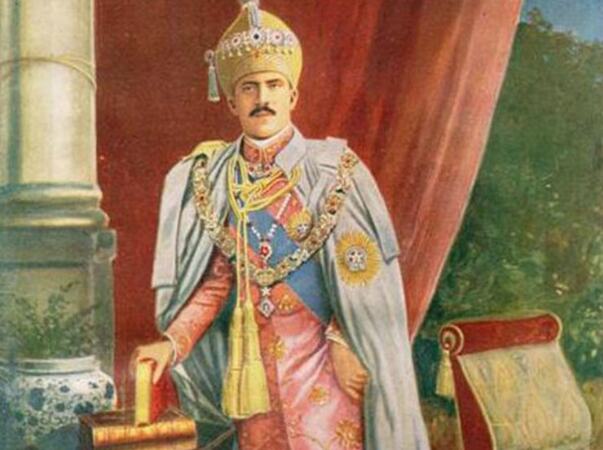An improbable accession
In the first of the two-part series, we discuss how despite having a stronghold over the Muslim faction, the Nizam’s proposal of joining Pakistan was limited by demographic, political and geographical factors

As the only 'His Exalted Highness' in the British Empire, the Nizam of Hyderabad, Osman Ali Khan, regarded himself as the 'first state in the princely order' in India. The British also gave him the impression that he was so – for they called on him to assume the mantle of leadership amongst Indian Muslims, and issue a firman encouraging Muslim soldiers to join the British forces against the Ottoman emperor who was regarded as the Khalifa of the Muslim world. They also conferred upon him the title of 'Faithful Ally of the British Government'. However, the Nizam also encouraged a section of the Khalifists to project him as the figure of religious and political authority, well beyond the state of Hyderabad. From 1924, he subscribed to the funds for the maintenance of the deposed Khalifa, and in 1931, he further strengthened his ties with the deposed Ottoman ruler by marrying his sons to his daughter and niece, the marriage being brokered by none other than Maulana Shaukat Ali.
Even though the Muslim population in Hyderabad was just around 12.8 per cent, it comprised the entire military and police establishment as well as the administrative elite. The Nizam's patronage of Islamic scholars, funding of the AMU, as well as the passage of money for hundreds of Hajj pilgrims from across India and the establishment of Osmania University, placed Hyderabad as the 'trans-regional Urdusphere' that connected Muslim intellectuals of Aligarh, Deoband, Lucknow and Hyderabad with their counterparts in Cairo, Kabul and Istanbul. Jinnah was never really comfortable with the Nizam, for if anyone could challenge his status as the 'sole spokesman' for the Indian Muslims, it was the Nizam of Hyderabad. However, an influential section of the Jamiat-ul-Ulema passed a resolution in 1940 calling for the formation of an independent Muslim state comprising eastern Afghanistan, tribal territories, the Frontier Province, Punjab, Sindh and Baluchistan. It was to be placed under the Nizam of Hyderabad. Prior to that in 1939, two Aligarh professors had suggested dividing India into four independent sovereign states: Pakistan, Bengal, Hindustan and Hyderabad that may agree to confederate. The point to note here is that Hyderabad was in the mind-space of the politically conscious Islamists, and all this must have given the Nizam the impression that he held many aces up his sleeve in the post-1947 political configuration which led him to issue a firman on June 11, 1947, that Hyderabad would neither accede to India nor to Pakistan.
Hyderabad's geographical position was both its strength and weakness. Together with Berar, which had been leased to the Union Government in perpetuity, it was surrounded by Central Provinces in the north, Bombay in the west and Madras in the east and the south. In terms of population (sixteen million), revenue (Rs 26 crore) and size (82,000 square miles), it was the premier state in the country with its own coinage, paper currency and stamps. However, despite all the additional frills and titles that the British conferred to the Nizam, the state was not treated differently from any other Indian state. Lord Hardinge and Lord Reading had been quite 'curt and cut' in their response to him, and reminded him on more than one occasion that the Paramount power was supreme, not just on treaties and precedent, but independently of them. Viceroy Reading emphatically refuted the Nizam's claim that there had ever been any equality between the governments of Great Britain and Hyderabad, and that the Nizam did not stand in a category separate from the rulers of other states. Perhaps he could not read the writing on the wall, for even after the promulgation of the Indian Independence Act, he issued a statement protesting against "the way in which my state (Hyderabad) is being abandoned by its old ally, the British government, and the ties which have bound me in loyal devotion to the Emperor are being severed."
The Nizam also sent a delegation to meet Mountbatten and seek clarity on three points: retrocession of Berar to the Nizam, the grant of Dominion status but if that was not possible, the terms of accession to the Indian Union. With regard to the first, Mountbatten pointed out that from 1935, no change in existing administrative arrangements was possible without consulting the people through their representatives or a referendum; and in such a case, Berar would prefer to remain with CP than with Hyderabad. With regards to Dominion status, the position was reiterated; and with regards to the accession, it was clarified that only three subjects – defence, external affairs and communications – would be handled by the new Dominion government of India – for which Hyderabad will not have to bear any expenses. It was in this meeting that the Nizam's delegation raised the possibility of joining the Dominion of Pakistan. The Nizam was trying to bargain hard, but it must be mentioned that Pakistan under Jinnah was never keen on the accession of Hyderabad for two reasons – it was a predominantly Hindu majority state, and more importantly, Nizam was the only one who could emerge as an alternate power centre to Jinnah.
Views expressed are personal



